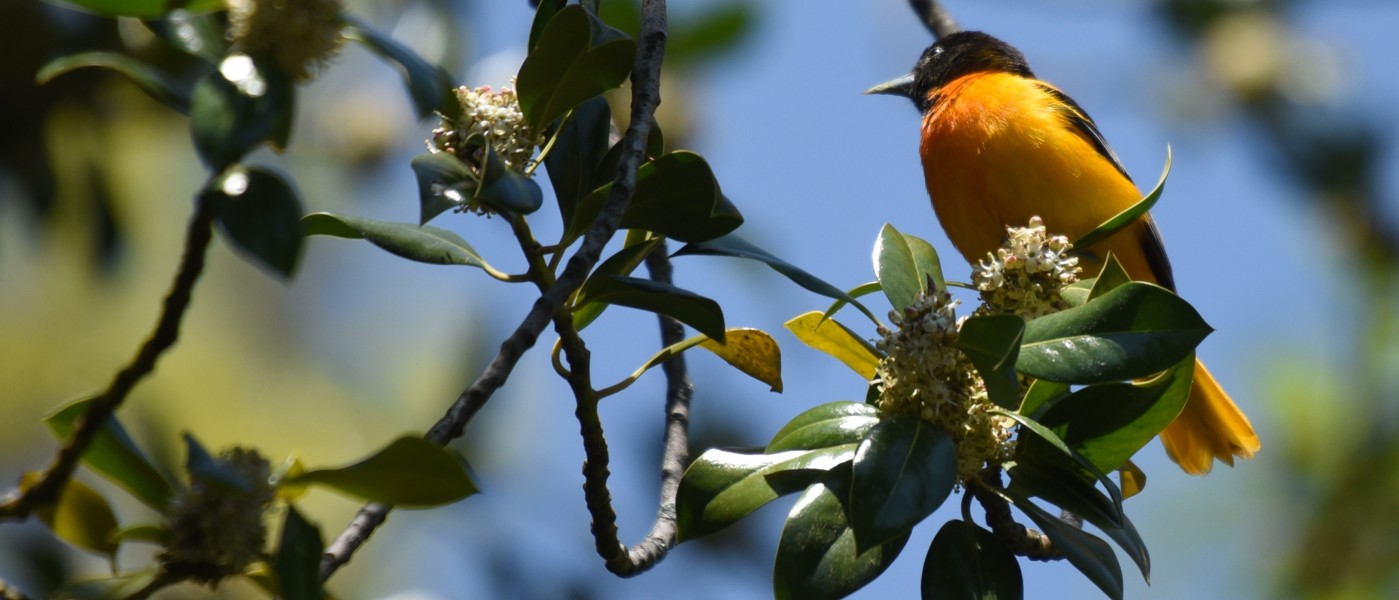Birds of Brooklyn: Baltimore Oriole
There are many beautiful birds in the New York City area, but the Baltimore oriole is probably one of the most beloved. It is a robin-sized bird, mostly black and orange with white wing bars and has a very musical song highlighted with much chatter. It is a nester in Central Park, Prospect Park, and probably even here at Brooklyn Botanic Garden.
Baltimore orioles are spring and early-summer residents in the NYC area. They arrive around the start of May, establish mating pairs, build nests, and breed their young. Then beginning in July, they begin migrating back to Central and South America where they spend fall and winter.
The origin of bird names always interests me. Some birds are named for the location where the first specimen was found, while others are named by the person who identified the first specimen, and yet others are named after their song. The Baltimore oriole gets its name from its colors—orange and black—which correspond to the colors on the shield of Lord Baltimore of England. How interesting!
The Baltimore oriole’s nest is just as remarkable as its color and its song. Its sock-like hanging nest is the size of a softball and is woven by the female from slender fibers. Nests are usually found on the edge of a park in a tall tree, often a sycamore. They are rarely found in a deep forest. The finished nest is always gray. It takes about a week to make and is done in three stages. First comes the outer bowl and attachment to a tree.
Then comes the inner bowl, which maintains the shape of the nest, and then finally the soft lining to cushion the eggs and the young. The nest lasts but one season, and sometimes remnants of it can be seen in winter when leaves on trees have fallen. Other birds that make a similar nest are the oropendolas of Central and South America. These, like the Baltimore oriole, are members of the blackbird family. When on the ground they walk, not hop, and they have pointed bills and a varied diet of insects and fruit.
The Baltimore oriole can be difficult to spot, because it likes to feed at the top of large trees. If you want to see one, here are some hints. In the spring get to know its song and recognize its chatter, then look high at the very top of the tallest tree.
In breeding time, look for its nest, usually midway up, on the outside of the tree and on a branch that points downward. In the fall, look for a tree with berries, especially dark berries with lots of juice. In the winter, just dream about the bird enjoying the warm weather of Central America.
The Birds of Brooklyn series looks at some of the most familiar and fascinating birds that call Kings County their habitat.


